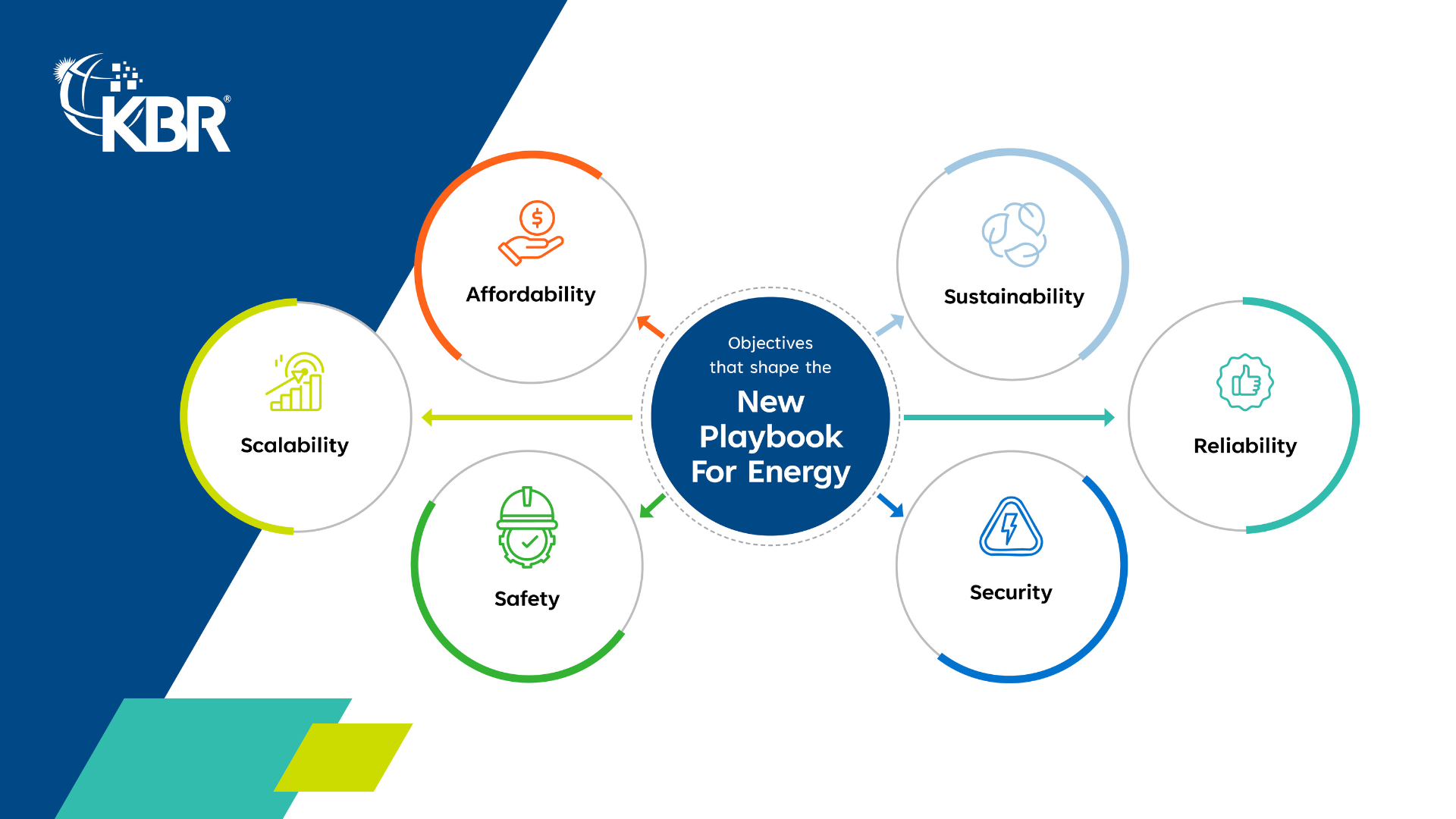The New Playbook for Real Energy: Balancing Ambition, Affordability, and Sustainability
By Hari Ravindran, Global Head and Senior Vice President, Technology Solutions, KBR
Energy and materials sectors have inherently been complex, and today, that complexity is intensifying. Amid shifting geopolitics, changing regulations, and rapidly evolving technology solutions, new challenges and opportunities are emerging as the world seeks to meet the growing demand for energy more responsibly.
According to the International Energy Agency (IEA), global energy demand is expected to grow by ~30% by 2030, driven by rising population and economic growth – particularly in emerging markets. In this environment, affordable and reliable access to energy remains more critical than ever – not just to sustain standards of living, but to drive growth and opportunity across the globe. Looking ahead to 2050, rising consumption will put even more pressure on energy supply systems. Any transition that fails to affordably meet this demand for real energy will ultimately fall short of its ambitions.
Industry shifts and the need for newer models
Major shifts are underway in our energy and materials supply, disrupting traditional value chains and creating new profit pools. To stay ahead, companies must adopt “future-back” strategies and plan for what’s next.
Take AI’s energy footprint for example. In 2023 alone, the installed capacity of data centers surged by an estimated 20%, or around 15 gigawatts – primarily in the U.S. and China. This highlights the need to plan infrastructure that is scalable, robust and secure to support new demand.
At the same time, heritage technologies remain essential. Consider petrochemicals: following a wave of significant capital investments between 2016-20, the sector saw a dip and has yet to fully rebound – even as demand projections remain strong through 2050. Transitioning petrochemicals complexes requires a phased approach – integrating bio-based or recycled feedstock into production lines over time, piloting carbon capture, utilization, and storage (CCUS) technologies and electrifying processes using low-emissions power. These measures will help companies build the technological and regulatory readiness to shift from fossil fuels while staying competitive.
In critical minerals, upstream players are working directly with end-users like OEMs to jointly invest in innovation and de-risk long term supply chains. These partnerships accelerate innovation in extraction, refining and conversion, and recycling – for instance, extracting lithium from both hard rock and brines, and making the process efficient and sustainable.
Overall, business models are shifting from pure commodity-based to more specialized, value-based strategies.
Sustainability: Beyond emissions
Sustainability remains a key pillar – but the conversations need to evolve beyond emissions. A solution that isn’t economically viable or doesn’t scale, can’t last. Investors increasingly understand this and are prioritizing credible, bottom-line-driven strategies and stable policy frameworks. We’ve seen how policy uncertainty – such as shifting incentives around green ammonia and hydrogen – can derail even the most ambitious projects.
In today’s world, sustainability can’t exist in isolation. A solution that isn’t scalable or affordable isn’t truly sustainable.
Technology as a force multiplier
At KBR, we work with global leaders across energy and materials – helping them respond to forces of cyclicality, market complexity, and disruptive shifts. Our focus is on building flexible, future-ready paths to scale, anchored in deep domain technology expertise.
One example is KBR’s work on an ammonia FPSO – a floating production, storage, and offloading facility designed to produce ammonia offshore. Drawing from decades of offshore expertise, this innovation integrates ammonia synthesis, storage, and offloading on a floating platform with CO₂ injection readiness. It offers a flexible, safe, scalable path to produce and store ammonia offshore, potentially using associated gas or renewable energy sources.
Further, a U.S.-based renewable energy transportation company is deploying 120-wagon battery trains to collect renewable energy where it’s generated and deliver it via the existing U.S. rail infrastructure. It’s a creative, near-term bridge while we await transmission lines that can take up to a decade to deploy.
Technology is already playing a critical role – and it’s where KBR continues to add real value
We’re helping clients navigate uncertainty with solutions built for today and tomorrow. This means constantly improving our heritage technologies and investing aggressively in emerging ones. Today, a significant part of our work focuses on blue and grey ammonia, where we bring decades of proven expertise to help clients meet their current objectives while staying competitive. But we’re also evolving our portfolio rapidly for what’s next.
In lithium, we’re delivering end-to-end solutions from brine to battery – by combining our refining and conversion expertise with direct lithium extraction (DLE) to deliver a scalable and efficient pathway to produce battery-grade lithium carbonate for batteries. In sustainable aviation fuel (SAF), our technology supports production from a wide variety of feedstocks including syngas, methanol, and even captured CO₂. And in advanced recycling technologies, three of our Hydro-PRT® (plastics recycling) projects are soon coming online simultaneously in the UK, Japan and Korea.
No single solution will deliver the energy transition. It will take a smart mix of proven technologies refined for lower emissions, emerging technologies that scale, and a true collaboration across sectors.
At KBR, we’re developing the technology, project execution, and integration capabilities to help businesses lead through uncertainty. Because the future of energy and materials must work for everyone – and must take everyone along.




